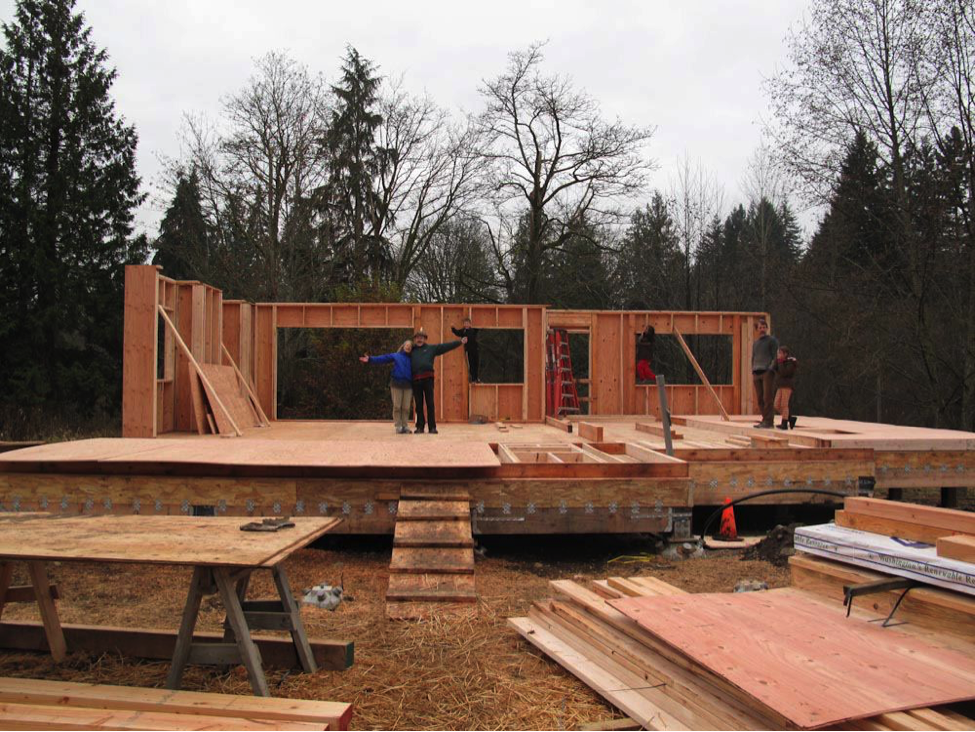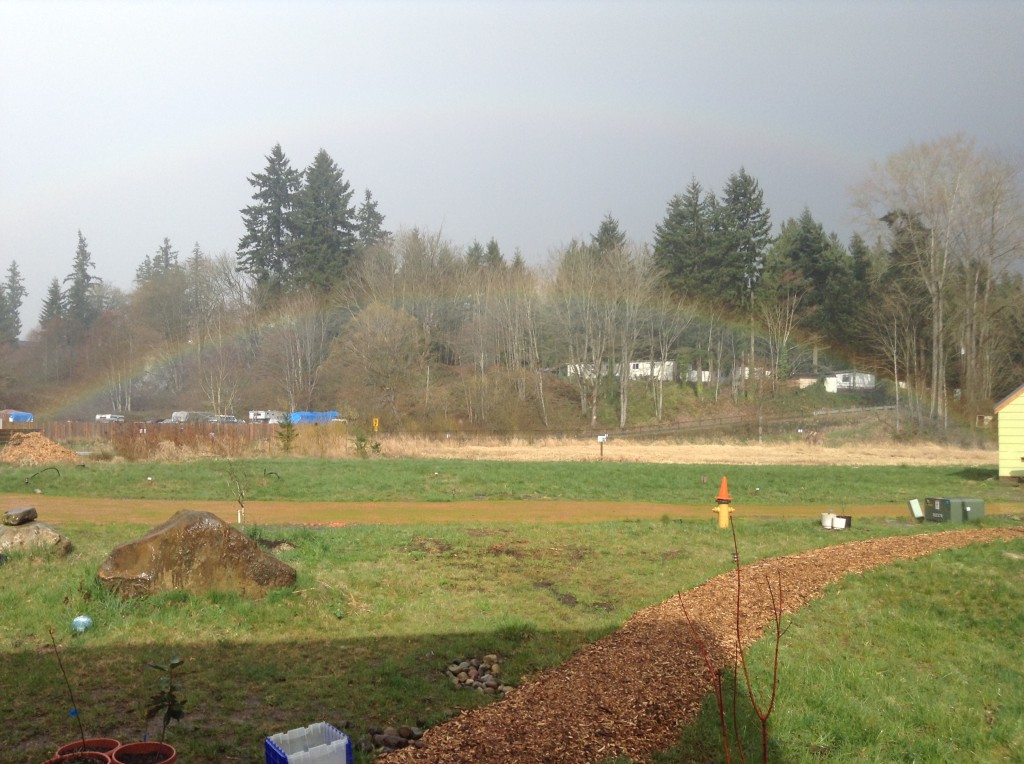by Eric Dolven (unit 5)
A couple of years ago, the Clearwater Commons installed a 9.2 kW so lar PV array on the roof of a shared building. Since that time, two families have decided to lease Nissan Leaf electric vehicles and use the solar array for charging needs. Of course the PV system is grid tied, so even if the array did not have the capacity to charge the vehicles, the energy would still be pulled from the grid. However, I got curious about how many Leaf miles our array could fully support. So here is the data.
lar PV array on the roof of a shared building. Since that time, two families have decided to lease Nissan Leaf electric vehicles and use the solar array for charging needs. Of course the PV system is grid tied, so even if the array did not have the capacity to charge the vehicles, the energy would still be pulled from the grid. However, I got curious about how many Leaf miles our array could fully support. So here is the data.
The inverters we installed provide 1 year of on-board data logging, January 1 to Dec 31. We currently do not download this data. As a proxy, I simply looked at the inverters and noted that our 9.2 kW array produced about 9000 kWh of electrical energy in 2014. If we had full, direct sun 24/7, that array would produce 80,592 KWh of electrical energy over the course of one year. Given roughly half the year is night and half is day, the value corrects to more like 40,300 kWh. And since solar intensity is roughly sinusoidal, and the average of a sin function over half a period is 2/pi (= 0.64), we could generate a maximum of roughly 25,800 kWh in a year. So we have about 35% efficiency based on the 9.2kW specification. This reduction is primarily a function of the cloudy weather in the winter months. Functionally, the array is a 3.2kW system.
 So back to the question of how many Leaf-miles the array can support. To answer this, I have started monitoring the energy efficiency of our Leaf. On average, the on-board computer reports our personal driving habits yield about 4 mi/kWh. Based on this, the 9000 kWh annual budget provided by our PV system would allow us to drive 36,000 miles per year. With a 12,000 mile limit stipulated in our lease agreement, this would allow three Leafs to be charged, fully supplied by our PV array.
So back to the question of how many Leaf-miles the array can support. To answer this, I have started monitoring the energy efficiency of our Leaf. On average, the on-board computer reports our personal driving habits yield about 4 mi/kWh. Based on this, the 9000 kWh annual budget provided by our PV system would allow us to drive 36,000 miles per year. With a 12,000 mile limit stipulated in our lease agreement, this would allow three Leafs to be charged, fully supplied by our PV array.
Of course, there is a hitch. The efficiency value I used is based on the car’s output; into how many miles does the energy stored in the batteries get converted. Behind this is the issue of filling those batteries. Charging is not a 100% efficient process. If we charge the car on the 110V charger that comes with the car, we actually get 2.7 to 3.0 mi/kWh. Using these numbers, the PV array can only provide 24,300 to 27,000 miles. Closer to two Leafs. The balance gets lost in the imperfect battery charging. But the story isn’t over. Charging with a 240V charger is much more efficient than with 110. But right now, I don’t have a good way to measure the charging of the 240V charger. So the true answer is that we could support more than two, but no more than three Leafs on our solar PV system.
An interesting side note is that if we use the solar p ower to fully charge those three hypothetical Leafs, it would save us 1200 gallons of gasoline each year (assuming cars that get 30 MPG). That converts to roughly 13 tons of CO2 gas that is not being released into the atmosphere.
ower to fully charge those three hypothetical Leafs, it would save us 1200 gallons of gasoline each year (assuming cars that get 30 MPG). That converts to roughly 13 tons of CO2 gas that is not being released into the atmosphere.








 ower to fully charge those three hypothetical Leafs, it would save us 1200 gallons of gasoline each year (assuming cars that get 30 MPG). That converts to roughly 13 tons of CO2 gas that is not being released into the atmosphere.
ower to fully charge those three hypothetical Leafs, it would save us 1200 gallons of gasoline each year (assuming cars that get 30 MPG). That converts to roughly 13 tons of CO2 gas that is not being released into the atmosphere.







